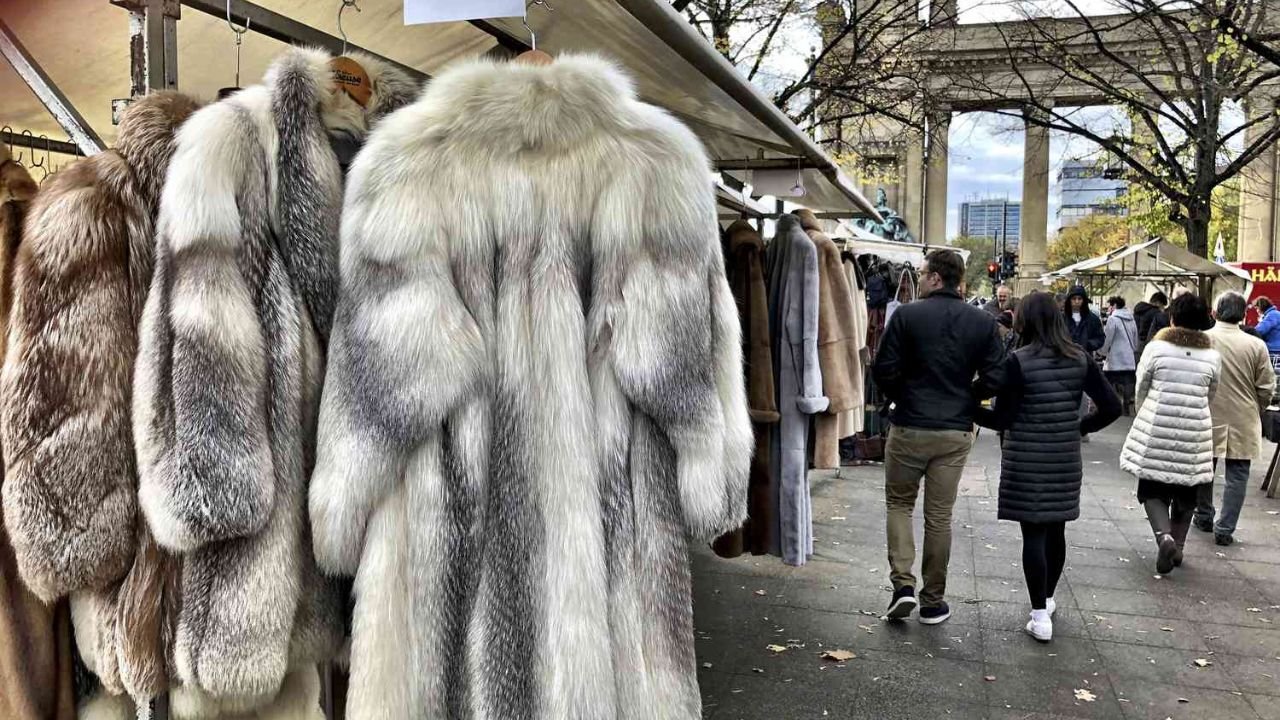Introduction
Fur coats have long been symbols of luxury, elegance, and timeless style. Over the years, many individuals accumulate fur coats, sometimes purchasing them as statement pieces or inheriting them from family. However, fashion trends evolve, personal tastes change, or circumstances prompt owners to part ways with their vintage or unused fur coats.
If you’re contemplating selling your old fur coat, you might feel overwhelmed by the process—uncertain about its value, the best place to sell, or how to ensure you get a fair price. This guide aims to demystify the process, providing you with comprehensive information to confidently sell your fur coat, whether for financial reasons, decluttering, or simply passing on a cherished piece.
Understanding Fur Coats: Types and Materials
Before diving into the selling process, it’s crucial to understand what kind of fur coat you own. Different types of fur and construction impact the coat’s value, desirability, and the best avenues for sale.
Common Types of Fur Used in Coats
- Mink
- One of the most popular and luxurious furs.
- Soft, durable, and versatile.
- Generally commands high prices.
- Chinchilla
- Known for its incredibly soft and dense fur.
- Rare and expensive, often used in high-end coats.
- Fox
- Recognizable for its thick, lush fur, often with a distinctive coloration.
- Popular for outerwear and trims.
- Rabbit
- Less expensive, lightweight, and often used for vintage or budget-friendly coats.
- Usually less valuable than mink or chinchilla.
- Sable
- Extremely luxurious and rare.
- Highly valuable, often considered a collector’s item.
- Lynx, Ermine, Muskrat, Beaver, and Other Furs
- Less common but may still be valuable depending on quality and rarity.
Types of Fur Coat Construction
- Full-length coats: Covering the entire body, often made with a single fur or multiple pelts sewn together.
- Collar or trim pieces: Smaller accessories or trims, often detachable.
- Faux fur or blends: Synthetic or mixed materials; generally less valuable.
Fur Condition and Its Impact on Value
- Excellent condition: No tears, bald spots, discoloration, or odors.
- Good condition: Minor wear, some signs of age but overall well-maintained.
- Fair to poor condition: Significant damage, moth holes, staining, or odors.
Properly assessing the condition is essential for pricing and marketing.
Assessing the Value of Your Fur Coat
Knowing the approximate value of your fur coat is the first step toward selling it successfully. Several factors influence its worth:
1. Fur Type and Rarity
- High-end furs like sable, chinchilla, and mink tend to fetch higher prices.
- Rarer furs or vintage pieces from renowned designers can command premium prices.
2. Age and Vintage Status
- Vintage or antique furs might appeal to collectors or vintage fashion enthusiasts.
- However, very old furs might have diminished value due to condition or outdated style.
3. Condition
- As mentioned, pristine condition increases value.
- Damage or signs of wear decrease desirability and price.
4. Brand and Designer Labels
- Designer labels or bespoke pieces can significantly increase value.
- Look for labels from luxury brands like Fendi, Gucci, or local artisans.
5. Size and Style
- Larger coats or styles in demand (e.g., classic silhouettes) are typically more valuable.
- Petite sizes might be less in demand but can appeal to specific markets.
6. Market Demand
- Current fashion trends influence fur coat resale value.
- Eco-conscious movements and fur bans in some regions affect demand.
7. Authentication and Certification
- Providing proof of authenticity, origin, or certificates of appraisal enhances buyer confidence and can boost price.
Estimating Your Coat’s Value
- Research online marketplaces: eBay, The RealReal, Vestiaire Collective, and specialty fur resale sites.
- Consult a professional appraiser: For high-value or vintage furs, an appraisal adds credibility.
- Compare similar listings: Check prices for comparable furs, conditions, and brands.
Preparing Your Fur Coat for Sale
Presentation plays a crucial role in attracting buyers and achieving a good price.
1. Clean and Condition
- Professional cleaning: Have your fur professionally cleaned and conditioned by a specialist.
- Avoid DIY cleaning: Incorrect cleaning can damage fur or cause discoloration.
2. Repair Any Damage
- Minor tears, loose seams, or bald patches should be repaired by a furrier.
- A well-maintained coat appears more attractive and valuable.
3. Store Properly
- Keep in a cool, dry, and dark place.
- Use a breathable garment bag; avoid plastic covers.
- Avoid hanging on wire hangers; use padded or wide hangers to maintain shape.
4. Document Details
- Take high-quality photos from multiple angles.
- Include shots of labels, labels, or unique features.
- Prepare a detailed description: fur type, size, condition, age, brand, and any special features.
5. Gather Provenance and Documentation
- Original purchase receipts, appraisals, or certificates of authenticity add value.
Selling Channels and Options
Choosing the right platform depends on your priorities: convenience, price, privacy, or target audience.
1. Online Marketplaces
- eBay: Largest global marketplace; auction or fixed-price listings.
- The RealReal: Luxury consignment platform specializing in designer and vintage items.
- Vestiaire Collective: Focus on designer fashion, including vintage furs.
- Etsy: For vintage or handmade fur items.
Pros: Wide reach, flexible pricing, control over listings.
Cons: Fees, potential scams, need for good photography and descriptions.
2. Specialty Fur Resellers and Consignment Shops
- Local or online boutiques specializing in fur resale.
- They often have expert buyers and can handle the appraisal, cleaning, and marketing.
Pros: Expert valuation, professional presentation.
Cons: Commission fees, limited control.
3. Auction Houses
- High-end or vintage furs can be sold via auction to collectors.
- Examples include Sotheby’s or Christie’s, depending on value.
Pros: Potential for high prices.
Cons: Auction fees, uncertainty, and commission.
4. Consignment Through Vintage or Thrift Stores
- Some stores accept fur coats on consignment.
- Good for less valuable or vintage pieces.
Pros: Easy process.
Cons: Lower prices, store commission.
5. Direct Sale to Private Buyers
- Personal networks, social media groups, or classified ads.
- Platforms like Facebook Marketplace, local classifieds.
Pros: No commission, flexible terms.
Cons: Risk of scams, need for vetting buyers.
Pricing Strategies
Pricing your fur coat appropriately is essential for a successful sale.
1. Research Market Prices
- Check current listings and sold items on online platforms.
- Consider the condition, age, brand, and fur type.
2. Set a Realistic Price
- Be honest about condition and authenticity.
- Price slightly above your minimum acceptable to allow room for negotiation.
3. Consider Auction or Fixed Price
- Fixed-price listings provide clarity.
- Auctions can generate higher bids if the item is desirable.
4. Negotiate Wisely
- Be prepared for offers below asking price.
- Decide in advance your lowest acceptable price.
5. Factor in Fees and Commissions
- Account for platform fees, seller commissions, or consignment costs.
Legal and Ethical Considerations
Selling fur involves legal and ethical nuances that vary by region.
1. Legal Regulations
- Some countries or states have bans or restrictions on fur trade.
- Ensure your fur is legally sourced and can be legally sold.
2. Ethical Sourcing and Authenticity
- Confirm your fur is ethically sourced or legally obtained.
- Avoid selling illegally hunted or poached fur.
3. Certification and Documentation
- Providing certificates of authenticity or provenance can assure buyers.
- Some platforms require proof of legal sourcing.
4. Handling Sensitive Topics
- Be transparent about the fur type and origin.
- Respect buyers’ ethical concerns about fur.
Tips for a Successful Sale
- High-quality photos: Clear, well-lit images from multiple angles.
- Detailed description: Include all relevant details — fur type, size, condition, brand, age, and features.
- Honest representation: Be truthful about condition and flaws.
- Prompt communication: Respond quickly to inquiries.
- Secure payment methods: Use trusted payment platforms to avoid scams.
- Shipping carefully: Use secure packaging, insured shipping, and reliable couriers.
Caring for and Recycling Old Fur Coats
If you decide not to sell or cannot find a buyer, consider alternative options:
- Repurpose: Turn into smaller accessories like collars, trims, or patches.
- Donate: Some charities or vintage shops accept fur donations.
- Recycle: Contact furriers or eco-friendly services that recycle or repurpose fur.
- Eco-conscious disposal: If the fur is no longer usable, dispose of it responsibly in accordance with local regulations.
Final Thoughts
Selling an old fur coat can be a rewarding experience, both financially and as a way to declutter responsibly. By understanding the types of fur, assessing its condition, researching the market, choosing the right platform, and presenting it professionally, you maximize your chances of a successful sale.
Remember, transparency, honesty, and patience are key. Whether you’re selling a vintage mink coat, a designer piece, or a family heirloom, approaching the process with knowledge and professionalism will help you get the best possible outcome.

